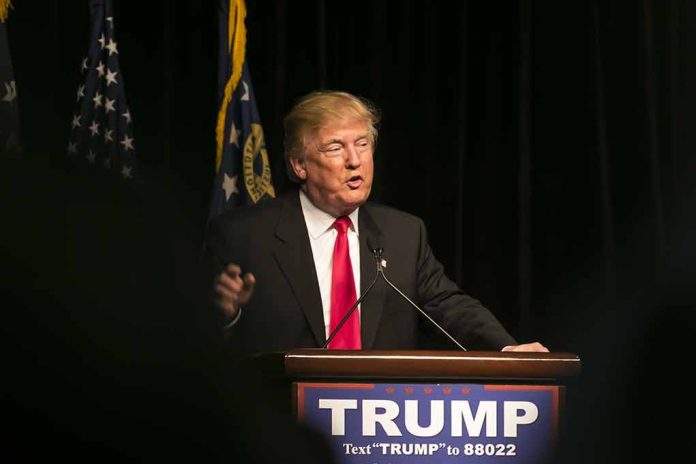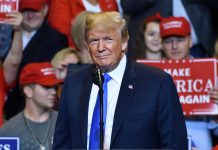
Republican candidate proposes sweeping tariffs, sparking economic debate and concerns over potential global trade tensions.
At a Glance
- Republican candidate proposes 10% worldwide tariff and 60% tariff on Chinese goods
- Plan aims to boost domestic manufacturing but could raise consumer prices
- Economists warn of potential inflation, reduced GDP, and job losses
- Proposal estimated to cost average US household $1,800 annually
- Critics argue tariffs could ignite trade disputes and disrupt global supply chains
Proposed Tariffs and Their Potential Impact
A Republican candidate has put forth a controversial economic plan centered on significant tariffs, aiming to revitalize domestic manufacturing. The proposal includes a 10% worldwide tariff and a staggering 60% tariff on Chinese goods. While the plan is intended to fortify local industries, it has sparked intense debate among economists and policymakers about its potential consequences for the US economy and international trade relations.
The Tax Policy Center’s analysis of the proposed tariffs paints a concerning picture for American households. According to their findings, the average after-tax income of US households could decrease by about $1,800, or 1.8%, by 2025. This reduction would be felt across all income groups, with even the lowest-income households potentially paying $320 more annually.
Trump’s tariff proposal is bad, but the Republican National Committee response is really scary. https://t.co/IaBDzzMHy8
— Paul Krugman (@paulkrugman) June 18, 2024
Economic Implications and Criticisms
Critics of the tariff proposal argue that it could lead to significant economic repercussions. Economists warn that such policies could result in increased inflation, harm to the middle class, and a substantial increase in the national debt. The Tax Foundation estimates that the current trade war policies have already added an average annual tax increase of $625 per US household before behavioral effects.
“A worldwide 10 percent tariff and a 60 percent tariff on Chinese goods proposed by Republican presidential candidate Donald Trump would lower average after-tax incomes of US households in 2025 by about $1,800, or 1.8 percent, according to a new analysis by the Tax Policy Center.” – Source
Furthermore, the proposed tariffs could have far-reaching effects on the US economy. Projections suggest a potential reduction in long-run GDP by 0.2%, a 0.1% decrease in the capital stock, and a loss of 142,000 full-time equivalent jobs. These figures underscore the complex nature of trade policies and their potential to impact various sectors of the economy.
Global Trade Implications
The implementation of such sweeping tariffs could have significant implications for global trade relations. There are concerns that these measures could ignite retaliatory trade wars, similar to those seen with China in recent years. Such tensions could disrupt global supply chains and potentially lead to diplomatic strains with key trading partners.
“Tariffs, especially those aimed at China, enjoy broad bipartisan support. But US consumers, manufacturers, and workers will pay the price, depending on the size on scope of the levy.” – Source
Proponents of the tariff plan argue that it could create and support American jobs, citing examples such as the 2018 washing machine tariffs that reportedly created over 2,000 jobs. However, critics point out that these job gains often come at the cost of increased consumer prices, with the same washing machine tariffs leading to a 10% rise in appliance prices.
Conclusion
As the debate over tariffs and trade policies continues, it’s clear that the proposed measures would have far-reaching implications for the US economy and its global trade relationships. While the intent to boost domestic manufacturing is understandable, the potential costs to consumers, businesses, and the overall economy cannot be ignored. As the election approaches, voters and policymakers alike will need to carefully consider the complex trade-offs involved in such sweeping economic proposals.
Sources:
- What Across-the-Board Tarrifs Could Mean For The Global Economy














